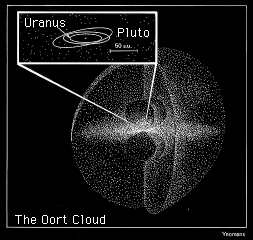This is an illustration of what the Oort cloud might be like.
Click on image for full size
JPL
Where do comets come from?
Mathematical theory suggests that most comets may come to the solar system from very far away, as far away as 100,000 AU. In this picture, the solar system is buried deep within the cloud.
An AU is the distance from the earth to the sun and is roughly equivalent to 100,000,000 miles. Mars is 1.5 AU from the sun, Jupiter is 5 AU from the sun, and Pluto is 39 AU from the sun. So comets come from very far away indeed.
Comets are observed to come to the solar system from all directions, therefore the place from which the comets come is thought to be a giant sphere surrounding the solar system. This sphere is called the Oort cloud after Jan Oort who postulated its existence in 1950. Thus comets are said to come from the Oort cloud.
(It is natural to ask How did comets get so far away? Astronomers are presently working to understand the answer to that question.)
But some comets may come to the solar system from closer in. The place where these comets come from is called the Kuiper Belt, which is located past the orbit of Pluto.
Kuiper Belt objects are suspected to be the source of the Jupiter family, a group of comets whose orbits take them between Jupiter and the sun in a short period of time (3-10 years). Comet Shoemaker-Levy 9 may have been one of those.
You might also be interested in:
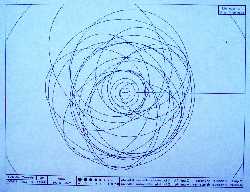
Comets are observed to go around the sun in a long period of time or a short period of time. Thus they are named "long-period" or "short-period" comets. One group of short-period comets, called the Jupiter
...more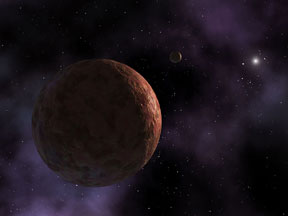
Astronomers have announced the discovery of a large new planetoid named Sedna. Mike Brown of the California Institute of Technology, Chad Trujillo of the Gemini Observatory in Hawaii, and David Rabinowitz
...more
There are many icy and rocky planetoids on the outer edge of our Solar System. As a group, all bodies that orbit, on average, further from the Sun than the 8th planet Neptune are called Trans-Neptunian
...more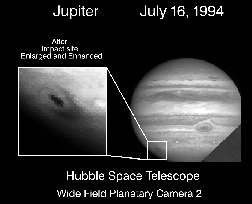
Scientists have learned a great deal from the crash of comet Shoemaker-Levy 9. Scientists traced the orbit of the comet backwards in time to guess its origin. This calculation, along with the discovery
...more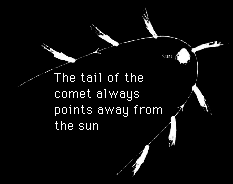
Comets are disturbed from their orbits in the Oort Cloud and begin a passage into the solar system, spinning and tumbling as they come. The trajectory which they acquire can be hyperbolic, parabolic, or
...more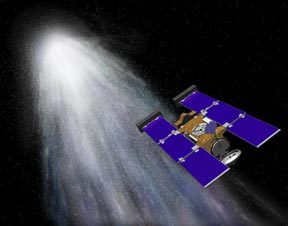
NASA's Stardust mission was the first spacecraft to collect samples of material directly from a comet and return them to Earth. Stardust was launched by a Delta 2 rocket from Cape Canaveral Air Station,
...more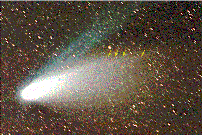
Hale-Bopp continues to offer surprises as astronomers study the comet. Using the Hubble Space Telescope and the International Ultraviolet Explorer, astronomers have found that there are distinctly different
...more


